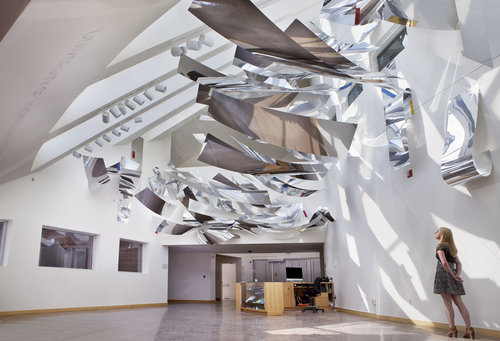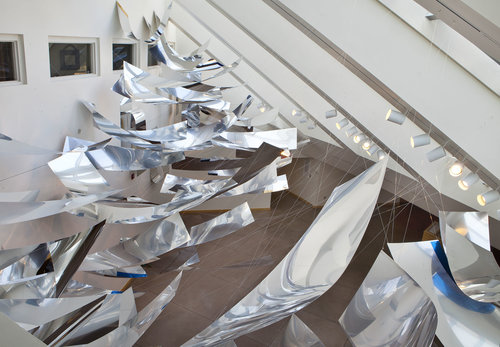Sharon Louden is an artist, educator, advocate for artists, editor of the Living and Sustaining a Creative Life series of books, and the Artistic Director of the Chautauqua Visual Arts at Chautauqua Institution.She graduated with a BFA from the School of the Art Institute of Chicago and an MFA from Yale University School of Art. Her work has been exhibited in numerous venues including the Aldrich Contemporary Art Museum, the Drawing Center, Carnegie Mellon University, Weisman Art Museum, National Gallery of Art, Birmingham Museum of Art, Weatherspoon Art Museum and the Kemper Museum of Contemporary Art.
Louden’s work is held in major public and private collections including the Whitney Museum of American Art, National Gallery of Art, Neuberger Museum of Art, Arkansas Arts Center, Yale University Art Gallery, Weatherspoon Art Museum, and the Museum of Fine Arts, Houston, among others.Her work has also been written about in the New York Times, Art in America, Washington Post, Sculpture Magazine, ARTnews and the Philadelphia Inquirer, as well as other publications. She has participated in residencies at Tamarind Institute, Urban Glass, Franconia Sculpture Park, Society of the Four Arts and Art Omi.
The entrance hall of the UW Art Museum in the Centennial Complex has been transformed with a site-specific installation by renowned artist Sharon Louden (American, b. 1964) using bright, highly reflective, curved aluminum sheets. The composition acts as a “drawing in space” and changes significantly depending on the vantage point, outside light, and weather conditions, creating new forms and tensions of seemingly infinite combinations.
How would you describe the form created by different combinations of your installation?
All of my installations respond and dialogue with the existing architecture of the space that encapsulates the piece. The flow and placement of the forms are composed in relation to each other and how they reflect passerbys below who are interacting with the mirror-like materiality. Overall, the composition of Windows at the University of Wyoming Art Museum implies movement as it dances through the space.
Can you explain why you prefer bright, highly reflective, curved aluminum sheets that you use for installation?
I use this material so that the piece is inclusive and expansive. The reflectivity brings in activity and participation with the work while simultaneously creating the illusion of an ever-expanding experience.
What is the meaning of “Windows” as the name of your installation at Wyoming University Art Museum?
Because of the expansive effect of the aluminum sheeting, each rectangle becomes a “window” into a new experience for the viewer as they interact with the piece.
The public followed the artistic process during the making of the installation. Did you get the perception you expected as feedback from the viewer during and after the installation process?
In all of my work, I never expect tangible feedback directly from viewers. Instead, my hope is that my work stimulates interactivity and conversation. With Windows at the University of Wyoming Art Museum, I did receive a bit of correspondence from those who experienced it and the comments were lovely, positive, and refreshing!
Photography by Christopher Gallo
Model by Jandey Shackelford
Video by Vinson Valega
Interview by Özlem Kan





